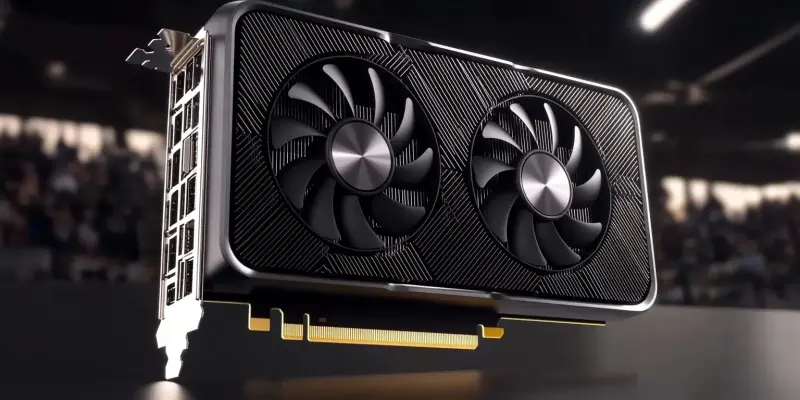The gaming community is buzzing with anticipation as Nvidia prepares to unveil its RTX 5000 series graphics cards at CES 2025, with the flagship RTX 5090 expected to be a game-changer in terms of power and performance. Enthusiasts are eagerly awaiting the generational performance uplift promised by the RTX 5090, which is anticipated to be between 60% to 70%, a leap that could redefine the gaming experience. However, mainstream gamers may have reasons to temper their excitement, as the RTX 5070 is projected to offer a more modest improvement of only 20% to 30% over its predecessor. This potential disparity has sparked debates on whether Nvidia’s focus on high-end performance might alienate a significant portion of its user base.
Anticipated Performance of the RTX 5090
According to various leaks and predictions, including those from notable leaker OneRaichu on platform X, the RTX 5090 is set to deliver an unparalleled performance boost that could surpass any previous generation upgrades. The talk of a 60% to 70% improvement suggests that gamers with the means to invest in the flagship model can expect a monumental leap in graphical fidelity, profoundly influencing the future of gaming. This rumored performance increase is likely to appeal not only to hardcore gamers but also to professionals in the fields of graphic design, animation, and high-end computing, who rely on cutting-edge technology for their work.
The excitement around the RTX 5090 isn’t just confined to speculative figures. Nvidia’s teaser campaigns and strategic leaks have fueled expectations, with some hints suggesting that high-profile game trailers, such as the new Witcher 4, might already be showcasing the capabilities of this unannounced GPU. If these predictions hold true, the RTX 5090 could set a new standard for what gamers and professionals can achieve with real-time ray tracing, higher frame rates, and overall better visual experiences. Yet, while this high-end card garners all the attention, it inevitably raises the question of accessibility and the balance Nvidia must strike to serve both elite and mainstream audiences.
Modest Gains for the RTX 5070
Contrasting the hype for the RTX 5090, the projected performance hike for the RTX 5070 appears significantly less spectacular. With a rumored 20% to 30% improvement over its predecessor, the RTX 5070 might fall short of the expectations of many gamers who seek high-quality graphics but are budget-conscious. This modest gain is particularly concerning given the rapid advancements in gaming technology and the increasing demands of modern video games. For a sizable portion of Nvidia’s customer base, the RTX 5070 is expected to be a practical choice, balancing cost and performance. However, the risk of it underwhelming this segment could result in mixed reactions among consumers who might feel underserved compared to high-end gamers.
Furthermore, the rumored specifications of the RTX 5070, such as its 12GB of VRAM, might not suffice for future-proofing against upcoming games that are progressively more resource-intensive. As game developers push the boundaries of realism and immersive experiences, the constraints of a mid-range card could become more apparent, potentially leaving mainstream gamers feeling left behind as the industry advances. Nvidia’s challenge lies in ensuring that even their mid-range offerings maintain sufficient improvements to satisfy users who might not be able to afford the steep price tags of high-end models like the RTX 5090.
Expectations and Market Reactions
The gaming world is buzzing with anticipation as Nvidia gears up to debut its RTX 5000 series graphics cards at CES 2025. The flagship RTX 5090 is expected to be a groundbreaking advancement in power and performance, with enthusiasts eagerly awaiting its release. The RTX 5090 promises a massive generational performance increase, speculated to be between 60% and 70%, which could transform the gaming experience. While hardcore gamers are thrilled, mainstream gamers might need to manage their expectations. The more accessible RTX 5070 is projected to offer a more modest improvement of just 20% to 30% over its predecessor. This potential gap in performance has sparked debates within the community about Nvidia’s strategy. Some argue that the focus on high-end performance could alienate a large segment of mainstream gamers. As the unveiling approaches, the broader gaming community remains divided on whether Nvidia’s approach will be inclusive or if it will cater only to those looking for the very best in gaming hardware.

